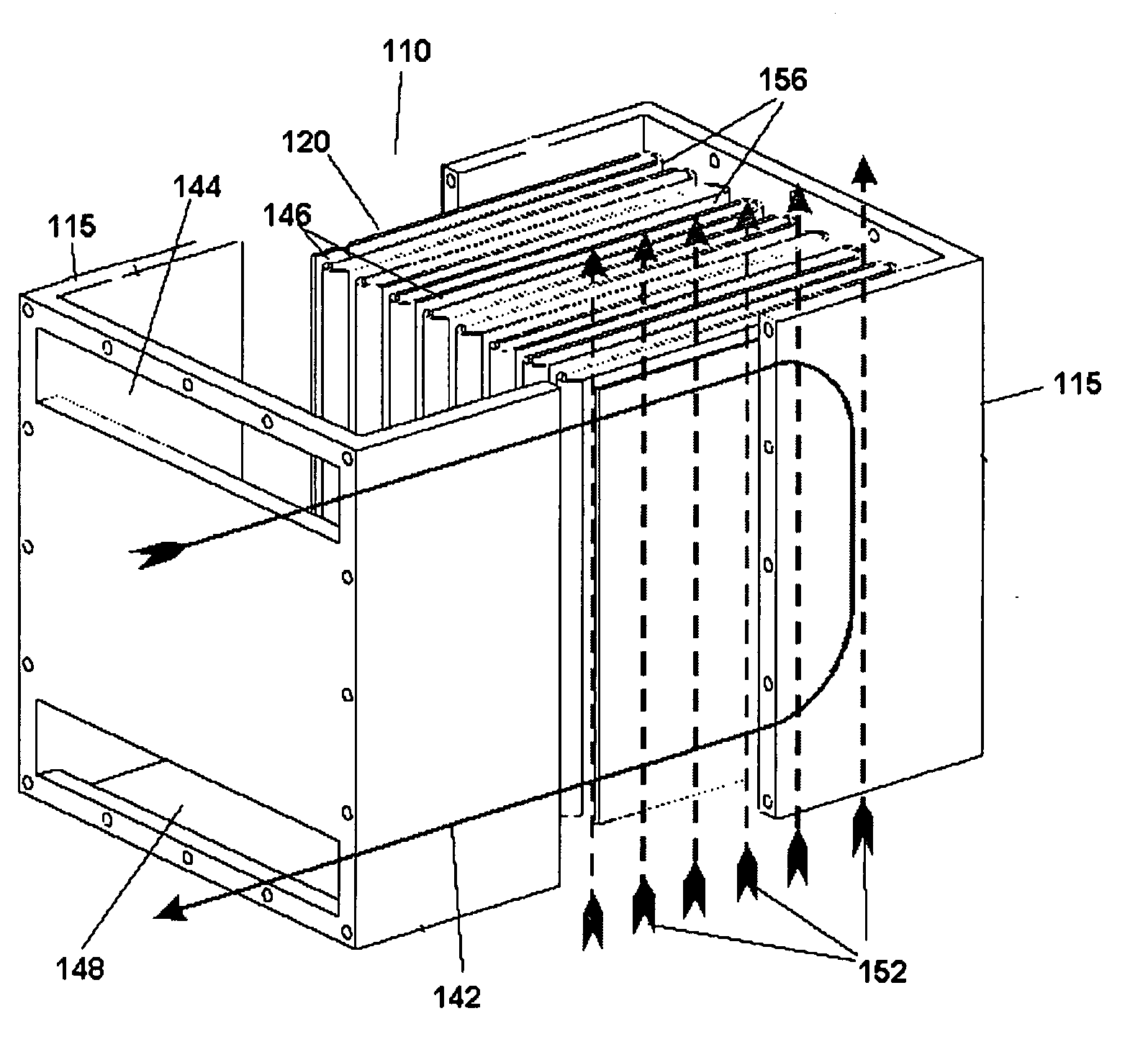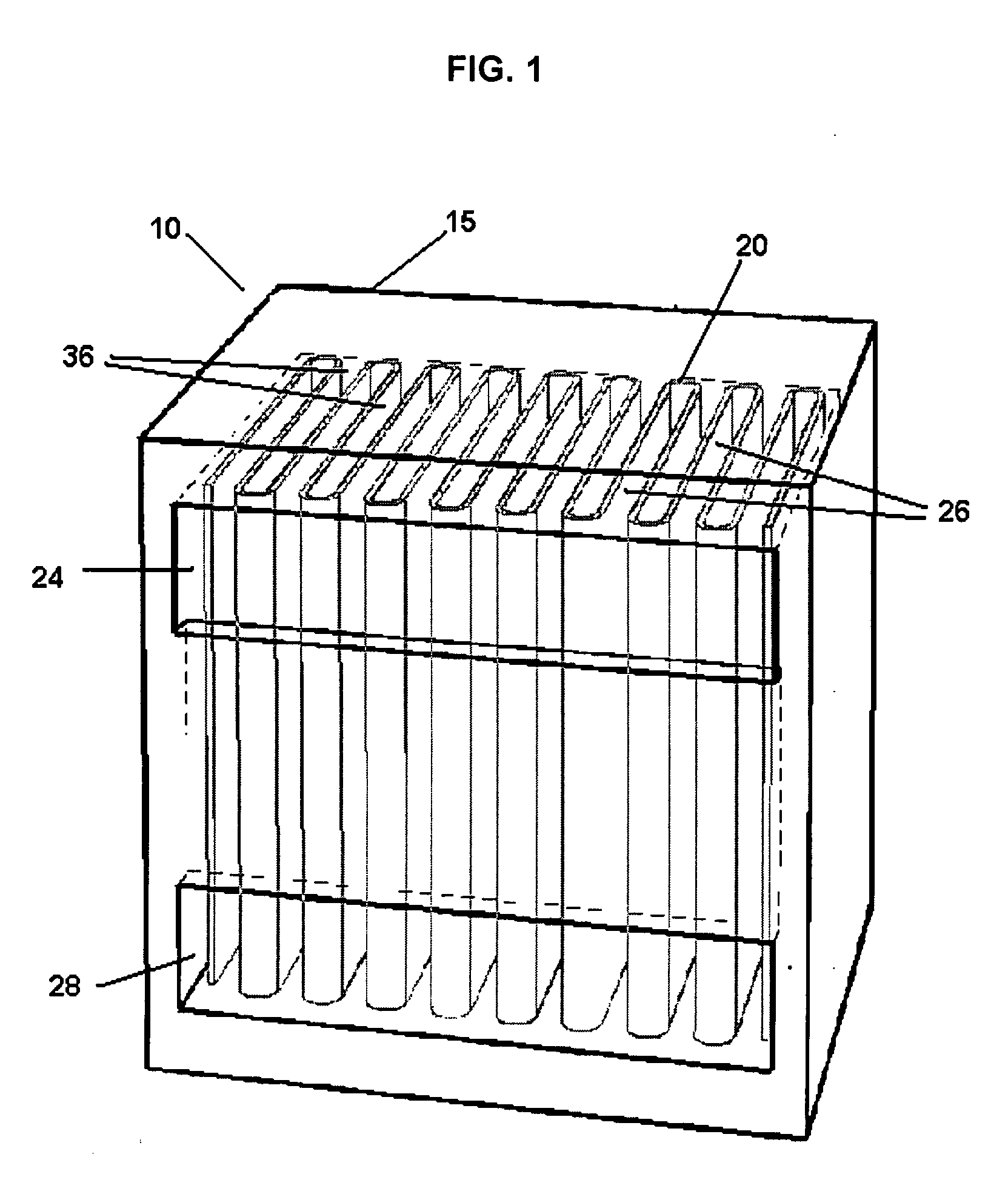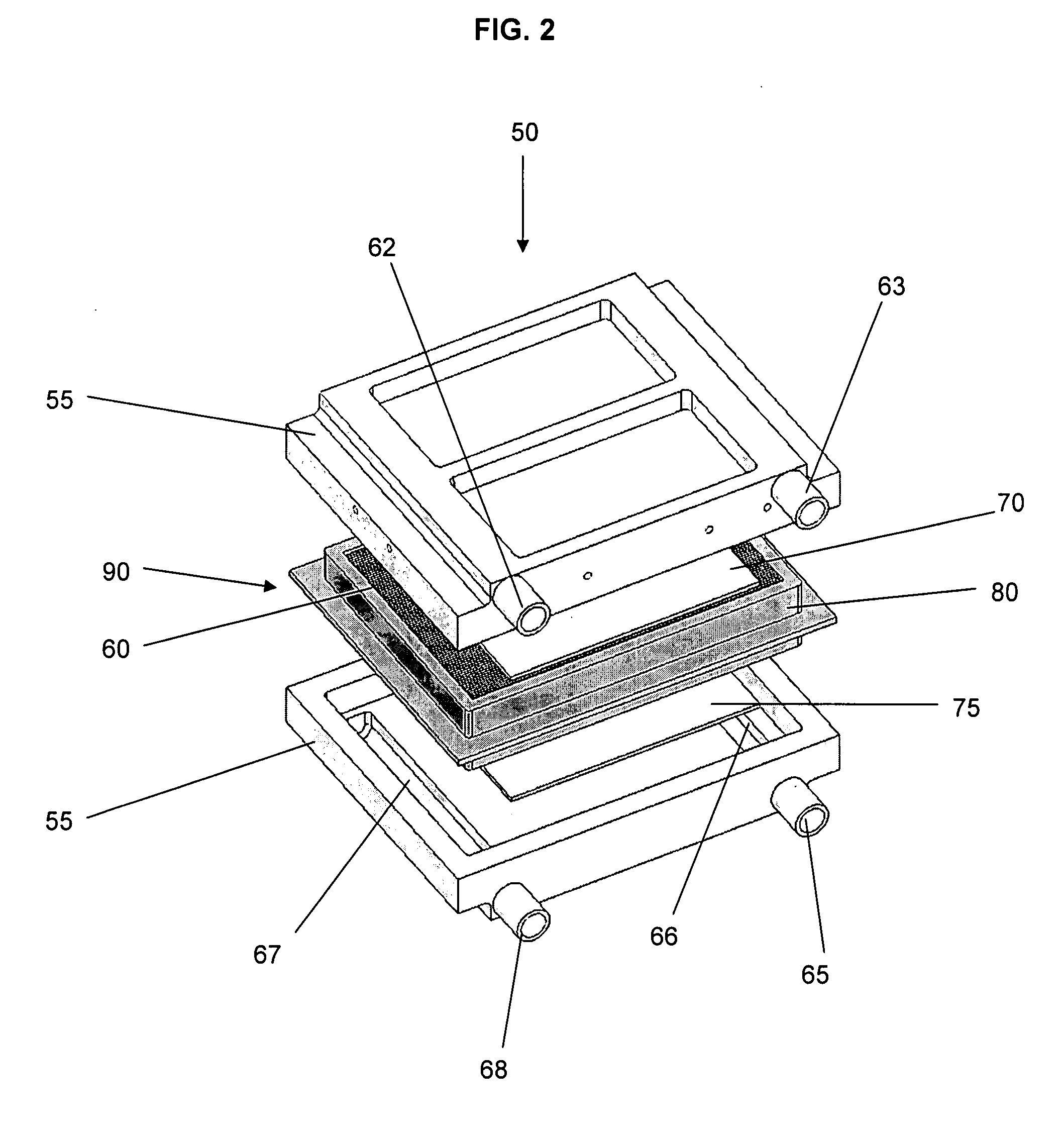Pleated heat and humidity exchanger with flow field elements
a technology of heat and humidity exchanger and flow field element, which is applied in the direction of carburettors, lighting and heating apparatus, mixing methods, etc., can solve the problems of high cost materials, general less compactness than plate-type devices, and the disadvantage of high pressure drop of hollow tube humidifiers
- Summary
- Abstract
- Description
- Claims
- Application Information
AI Technical Summary
Benefits of technology
Problems solved by technology
Method used
Image
Examples
Embodiment Construction
[0035] The present invention relates to a heat and humidity exchanger comprising a pleated membrane cartridge that is enclosed in a housing. The cartridge comprises a pleated water-permeable membrane, sealed around the perimeter, and flow field elements that are disposed within the folds (pleats) on at least one side of the pleated membrane. Folds on the other surface of the water-permeable membrane can also have flow field elements disposed therein. The membrane fold wraps around and generally contacts both faces of the flow field element. When there are flow field elements on both sides of the membrane, the flow field elements are effectively interleaved on opposite sides of the pleated membrane.
[0036] The flow field elements are for directing fluid streams across the surface of the membrane that is in contact with the element. The open-channels of the flow field element offer less restriction to fluid flow than the netting or meshes used to support the membrane in existing pleat...
PUM
| Property | Measurement | Unit |
|---|---|---|
| perimeter | aaaaa | aaaaa |
| hydrophilic | aaaaa | aaaaa |
| humidity | aaaaa | aaaaa |
Abstract
Description
Claims
Application Information
 Login to View More
Login to View More - R&D
- Intellectual Property
- Life Sciences
- Materials
- Tech Scout
- Unparalleled Data Quality
- Higher Quality Content
- 60% Fewer Hallucinations
Browse by: Latest US Patents, China's latest patents, Technical Efficacy Thesaurus, Application Domain, Technology Topic, Popular Technical Reports.
© 2025 PatSnap. All rights reserved.Legal|Privacy policy|Modern Slavery Act Transparency Statement|Sitemap|About US| Contact US: help@patsnap.com



